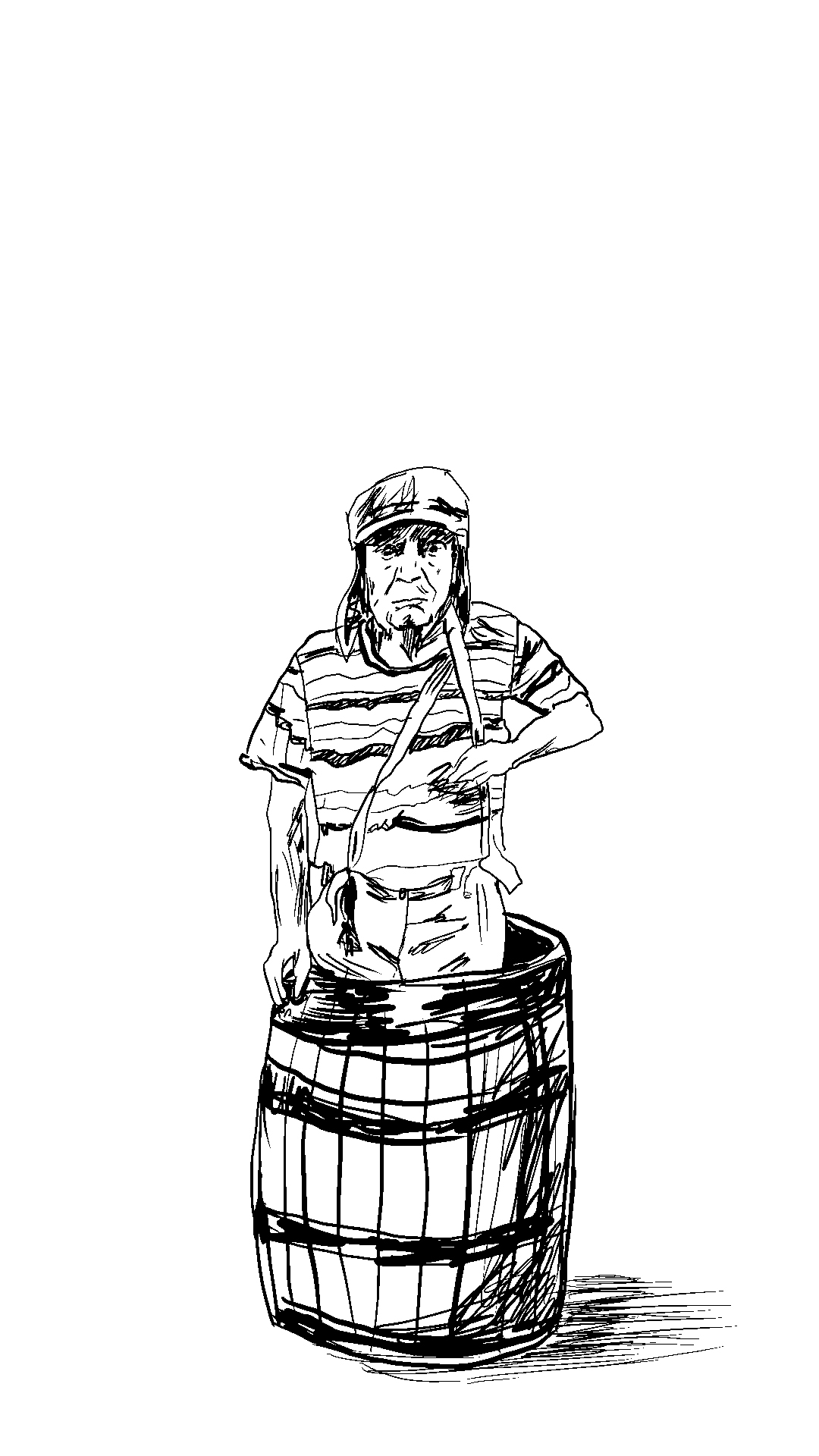My favorite happy neighborhood
March 5, 2021
 This
piece represents the opinion of the author
.
This
piece represents the opinion of the author
.
 Dalia Tabachnik
Dalia TabachnikGoogle often artistically alters its logo to commemorate notable events, holidays or historical figures. Known as a Google Doodle, it often contains interesting information about what’s being commemorated, and I enjoy reading about the different people and occasions being recognized. However, as of today, only one Doodle has ever elicited an emotional response from me. On February 21, 2020, Google celebrated what would have been the 91st birthday of Roberto Gomez Bolaños, affectionately nicknamed “Chespirito,” a Mexican comedian regarded as one of the greatest icons in Spanish-language entertainment.
Gomez Bolaños began his career as a screenwriter and actor whose prolific writing earned him the nickname “Chespirito”—a Spanish phonetic pronunciation for “Little Shakespeare.” In 1968, Televisión Independiente De México—later renamed Televisa—gave Chespirito the opportunity to create his own TV show. Thus, Chespirito’s first major project, a comedy sketch show resembling Saturday Night Live in structure, was born. Called “Los Supergenios de La Mesa Cuadrada,” it gave birth to many of Chespirito’s iconic characters—including, most notably, “El Chavo” (Mexican slang for “The Kid”).
Chespirito’s hired actors formed a legion of brilliant performers who would later make up a majority of the cast and form their own school of comedy in the early 1970s. Simultaneously, Televisa grew into the largest TV network in Latin America and saw potential in the “El Chavo” sketches, asking Chespirito to produce a series based on the character.
In 1973, the first episode of the new series “El Chavo del Ocho” (“The Kid from the 8”) aired and became arguably the most successful ever sitcom episode of Latin American origin. “El Chavo del Ocho” tells the misadventures of Chavo, an eight-year-old orphan played by Chespirito himself, and the rest of the tenants of “la vecindad”—a low-income Mexican townhouse neighborhood. The show employs a comedy style which mixes slapstick, double entendres, running gags and misinterpretations, which often leads the characters into extremely funny interactions. Other iconic characters from this neighborhood include:
Quico, Chavo’s pompous and rich nine-year-old best friend who wears a black sailor suit;
Chilindrina, an intelligent but mischievous eight-year-old freckled girl who is friends with Chavo and Quico;
Don Ramon, a good natured but lazy and unemployed tenant who is 10-14 months behind on rent and is also Chilindrina’s single father;
Doña Florinda, the arrogant mother of Quico. As a widow, she is often overprotective of Quico, and thus a common gag is her slapping Don Ramon over misunderstandings;
Señor Barriga, the corpulent owner of the neighborhood whose name translates to “Mr. Belly.” He often chases Don Ramon for rent, only to accidentally be whacked by El Chavo;
Professor Girafales, the local elementary school teacher who has a romantic relationship with Doña Florinda;
Doña Clotilde, an older widow whose strange mannerisms earn her the nickname “The Witch from Apartment 71” in the neighborhood.
The true genius behind El Chavo lies in how the characters appealed to the greater audiences of Latin America. During the 1970s, a majority of TV shows in Latin America portrayed upper-class settings, and those rich worlds often felt like fantasy to most viewers. El Chavo and its characters represented archetypal situations for a majority of Latin American neighborhoods. When I spoke to my parents and grandparents about the show, they recalled similarities between their own neighborhoods growing up and that of El Chavo. The show did not stray from exploring, albeit comedically, themes such as poverty, single parenthood in both men and women, unemployment and class differences.
Although flawed in their own ways, all of the characters have an innate sense of friendship, and their experiences in this lower-class neighborhood taught audiences heart-touching lessons about the reality of Latin America. El Chavo himself, even though he is often hungry and frequently hides in a barrel (this is where he feels safe), never strays from finding happiness in the simplest of items—a broom, a ham sandwich or a paper boat—and thus fosters the love of those around him. For many generations of Latin Americans, including myself, this became the prime legacy of the show.
As a child, I loved the tradition of watching El Chavo with my family. Just like every other kid in my old neighborhood, I saw a little of myself in El Chavo. To this day, I still watch episodes whenever I need a laugh.
Despite changing generations of Latin Americans, El Chavo remains a timeless classic of comedy. Many of its characters have become staples of Latin American pop culture, where even their catchphrases have ingrained themselves into the Spanish language. For this wonderful gift to our society, we have to thank the mastermind Chespirito, who unfortunately passed in 2014 but lives forever in our happiest memories.
Gracias Chespirito, por siempre.

Comments
Before submitting a comment, please review our comment policy. Some key points from the policy: